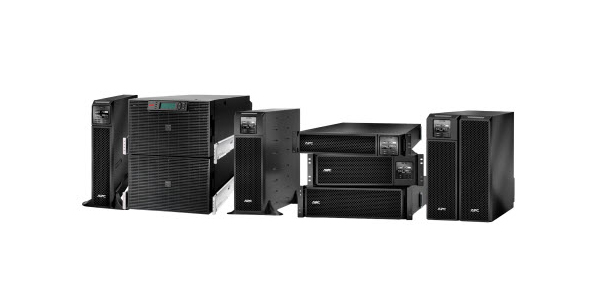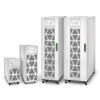A simple explanation of UPS topologies

Choosing the right UPS for your application and environment is important and one of the key differences to consider is UPS topology. The most common UPS topologies are Standby, Line Interactive and Double Conversion On-Line. This article will help you choose the best UPS topology for your needs.
Standby
Standby is the most common and simple topology and is often used for UPSs that support PCs and other small IT equipment. With a standby UPS the transfer switch will switch the load over to the battery / inverter backup power source if the primary (AC) power fails. The inverter only starts when the power fails, hence the name "Standby."
Line Interactive
Line Interactive is the most commonly used UPS type for applications such as small business web hosting and servers. The battery-to-AC power converter (inverter) is always connected to the UPS output. Operating the inverter in reverse during times when the input AC power is normal provides battery charging.
When the input power fails, the transfer switch opens and the power flows from the battery to the UPS output. With the inverter always on and connected to the output, this design provides additional power filtering. This topology is very efficient and reliable and provides superior power protection.
Double Conversion On-Line
In the Double Conversion On-Line design, failure of the input AC does not cause activation of the transfer switch, because the input AC is not the primary source, it’s the backup source. Therefore, during an AC power failure, on-line operation results in no transfer time.
While a Standby and Line Interactive UPS will exhibit a transfer time when a blackout occurs, a double conversion on-line UPS will exhibit a transfer time when there is a large load step or inrush current. This transfer time is the result of transferring the load from the UPS inverter to the bypass line. Both the battery charger and the inverter convert the entire load power flow in this design, which causes reduced efficiency and increased heat generation. This topology is best suited to applications where a high availability N+1 design is required.
Comparison of UPS topologies
|
Topology |
Practical Power Range (kVA) |
Voltage Conditioning |
Cost per VA |
Efficiency |
Inverter always operating |
|
Standby |
0 -0.5 |
Low |
Low |
Very High |
No |
|
Line Interactive |
0.5 -3 |
Design Dependent |
Medium |
Very High |
Design Dependent |
|
Double Conversion On-Line |
5 -5000 |
High |
Medium |
Low |
Yes |
Choosing the right UPS for your application
Different UPS types are better suited to different applications and all have benefits and limitation as outlined in this table:
|
Topology |
Benefits |
Limitations |
Application Notes |
|
Standby |
Low cost, high efficiency, compact |
Uses battery during brownouts, Impractical over 2kVA |
Best value for personal workstations |
|
Line Interactive |
High reliability, High efficiency, Good voltage conditioning |
Impractical over 5kVA |
Most popular UPS type in existence due to high reliability, ideal for rack or distributed servers and/ or harsh power environments |
|
Double Conversion On-Line |
Excellent voltage conditioning, ease of paralleling |
Low efficiency, Expensive under 5kVA |
Well suited for N+ 1 designs |
This information should help you understand the differences in UPS design between available products on the market.
If you would like some guidance in choosing the right UPS for your business, get in touch: sales@bdcservices.com.au or 1300 00 11 95













Comments